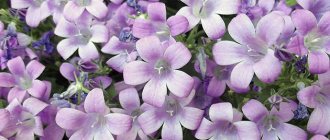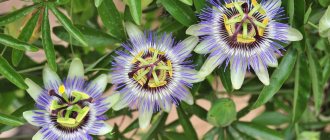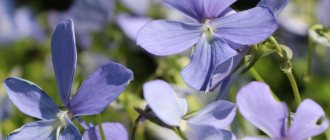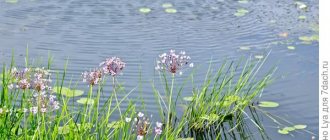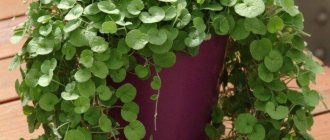Purslane, or dandur, is a plant that grows primarily in the tropics of the Northern and Eastern Hemispheres. The family has about two hundred species, which are located mainly near bodies of water. It was appreciated as a garden plant in the Middle Ages, when the English began to grow it near their homes.
In Russia, it can be seen in the wild in the Far East and the European part of the country. Domestic gardeners value it for its attractive appearance during the flowering period - the variety of flowers and shapes of stems, as well as the medicinal properties of purslane, make it a welcome guest in any garden or even on the windowsill in the house. In addition, the landscape design can be diluted with several varieties of dandur, which looks very presentable in parks or squares.
Annual and perennial purslane
There are both annual and hybrid species that can be grown for more than one year. At home, perennials rarely survive until next year. In the best case, it can be saved until the start of the new season by transplanting it into a pot during the cold weather.
However, some hybrids can do well both indoors and outdoors. In summer they grow outdoors, but in winter they can be safely moved indoors. This one lives for a long time, but it is unlikely to be able to please the eye with lush flowering - annuals are considered not so modest in terms of flowering.
If your goal is to get colorful, luxurious flowers, you should look towards annuals. Of course, it will have to be re-grown at the beginning of each season, but for the sake of appearance, many gardeners are ready to sacrifice their time.
By the way, there is a method that does not involve human intervention: you just need to plant it once and not dig up the soil near it, then the purslane will independently disperse the seeds from year to year. An important point is that this method is only relevant for warm climates, because the plant is considered heat-loving.
Site selection
Plants in the garden plot
Purslane is a truly unpretentious flower that grows in nature on rocky, dry soil. The succulent feels good even in poor sandy soils.
Nutritious soil promotes excessive plant growth to the detriment of flowering (it needs to be supplemented with sand), and on peat soil the succulent may not grow at all.
Lowlands where water can stagnate and poorly drained soil are not suitable for the flower - the plant loves dryness. Therefore, it is better to choose elevations not far from the southern wall of garden buildings.
The only thing that is really important to consider when choosing a location for a flower garden is the level of illumination of the area. An open area with diffused soft light is an ideal location for planting heat-resistant purslane. Even light shade can prevent a succulent from blooming.
Types and varieties of purslane
Of the many species, only four are propagated by humans. They can often be seen in gardens or vegetable gardens.
The most common types:
| View | Description |
| Garden | An annual plant that in the wild can usually be seen along roads or in various ravines. Often compared to a weed due to its rate of reproduction. Famous for its medicinal properties. The optimal period for sowing is from May 20 to June 10. The leaves have a rather rough texture. |
| Ampelny | Hybrid obtained during selection. Grown in pots. Looks great on balconies. Flowers can be either double or simple. |
| Large-flowered | As a rule, it does not exceed 30 cm in height. It has lodging stems. Its leaves take the shape of a cylinder. The flowers reach a diameter of up to 7 cm and take the shape of a bowl. Thanks to selection, it was possible to develop not only a plant with red, but also white, and even cream. |
| Terry | Blooms all summer. Famous for its attractive petal shape. It closes the buds at night, and throughout the sunny day it beautifully decorates the garden. There are varieties that keep the buds open around the clock. |
Large-flowered purslane hybrids
Breeders have long begun work on developing varieties of this plant. Among the hybrids, the following stand out:
| Variety | Description |
| Double Mix | The buds with a complex structure can be of different shades; in fact, it is a mixture of several varieties of purslane. |
| Sanglo | Large buds that never close during flowering. |
| Air marshmallow | Relatively small variety. Inflorescences are white. They have a terry structure. |
| Cream | Various shades of beige during flowering period. |
| Splendence | The bright pink shade pleases the eyes. |
| Tequila White | A selectively bred hybrid. It is distinguished by flowers with a complex structure and a carpet of leaves that can reach up to 35 cm in diameter. It is not picky about moisture, so it can be watered infrequently. |
| Cherry | A relatively low plant with cherry-colored inflorescences. |
| Princely rug | A combination of white, red and bright orange colors. |
| Royal | During the flowering period, you can observe combinations of a wide variety of shades. |
| Sonya | Simple foliage harmonizes perfectly with luxurious blooms of different colors and medium-length stems. Suitable for growing in hot climates. |
| Pun | Multi-colored flowers of medium size. |
| Scheherazade | A large-flowered variety that shows itself in all its glory in July. The buds close at night and in cloudy weather. |
Description
In the Middle Ages, purslane was grown as a vegetable and medicinal crop. People call it a rug, as the plant spreads on the ground like a carpet.
The stems of purslane are branched and creeping, the leaves are fleshy. The flower grows about 20 cm in height and blooms from June to September with beautiful flowers up to 3 cm in diameter.
Note! Decorative purslane is a perennial plant, but in Russia it is grown as an annual.
Purslane looks perfect on alpine hills and beautifully decorates borders. You can grow a carpet plant in flower beds, in flower pots, flowerpots, on the balcony and on the window.
Propagation of purslane
You can grow a plant in the following ways:
- Seedling method. This option is considered the most effective. A suitable period for planting is the last days of February or the beginning of March, but it is also possible in April. To plant a house, you need to make sure that the soil is not too saturated with peat.
- Planting seeds in open ground. Seeds are planted in the ground in early summer. Recommended soil temperature is +20…+25 °C. At a lower temperature, the death of the sprouts is possible. The place chosen for planting should be well lit by the sun. The soil should be moistened, and after planting, cover them with polyethylene. When the first shoots appear, the film should be removed. The grown plant should be watered as the top layer dries.
- Wintering. Since climatic conditions in our country do not allow purslane to be grown in open ground, during the cold season the plant is grown indoors, where it is transferred for the winter. Dandur reproduces quite well on its own, so you don’t have to dig up the bed every year.
- Cuttings. Vegetative propagation is also possible. In the spring, you should cut the cuttings, remove excess foliage and put it all in water. When the roots form, you can start replanting them, after moistening the soil. The cuttings will do well where there is not sun all the time. A grown plant can be transplanted from partial shade to a permanent place of residence.
The choice of growing method should be based on preferences and the resources needed for proper growth.
Step-by-step instruction
Proper sowing of seeds consists of a set of important measures that must be carried out in accordance with all the rules.
Containers and soil
For purslane, ordinary garden soil is suitable, to which you need to add a little sand or vermiculite. But it is better if it is breathable and light soil. Therefore, to loosen it, it is recommended to add high-moor peat (the same amount as soil).
Important! Purslane is susceptible to blackleg, so the soil is heated in the oven or microwave for 30 minutes before sowing the seeds.
Purslane is best grown in wide and shallow boxes. However, sowing can also be carried out in individual containers: plastic cassettes, cups, peat pots, or tablets.
Important! There should be drainage holes at the bottom of the container to remove excess moisture and watering, which is carried out through the pan.
Seed preparation
Purslane seeds are first soaked in a solution of growth stimulator Epin or Zircon according to the instructions .
After this, they are strained through thick cotton cloth and allowed to dry.
Interesting! Pre-sowing preparation may not be carried out, but for quick and friendly seedlings, this procedure should not be ignored.
Sowing seedlings
The sowing scheme is simple, even a novice gardener can cope with it:
- A 1.5 cm drainage layer is laid on the bottom of the container. You can use perlite, expanded clay, pebbles, and broken brick.
- Next, pour the prepared soil, but not to the edges.
- Moisten the soil with a spray bottle with soft, clean and warm water.
- Lightly compact.
- Small seeds are scattered evenly over the surface of the soil. For convenience, they can be mixed with sand.
Sowing option! To the snow. Clean snow is laid out on the ground and purslane seeds are scattered. When the snow melts, the seed will be drawn into the ground.
- Spray with warm water from a spray bottle (you can use a solution of growth stimulator Epin, Zircon).
- The containers are covered with glass or film.
- The name of the crop and the planting date, if necessary, are written on each container.
- The containers are left in a bright place with an air temperature of about 25 degrees.
Seedling care
In order for the seedlings to grow healthy and strong, you need to properly care for them:
- Before emergence, the film is removed every day for ventilation for 20 minutes and the condensation is wiped off.
- After seed germination, the film is removed forever.
Important! With proper care, the first shoots will appear in 4-5 days.
Watch the video! Purslane. sowing purslane seeds. review of seedlings
Picking
Picking is carried out when 2 true leaves appear on the sprouts.
In this case, the same soil is used as for sowing seeds. Picking is carried out in separate plastic cups with drainage holes at the bottom, or in peat pots with a diameter of 5-10 cm.
Picking scheme:
- Soil is poured into new containers.
- A small depression is made in the center.
- Using a plastic spoon or wooden stick, dig up several seedlings with soil.
- Transfer the seedlings to the hole.
- Carefully fill the hole, lightly tamping it down.
- The cups are placed on a tray with water so that the soil is saturated with moisture.
After picking, care for the sprouts in the same way as before this procedure.
How to care for garden purslane
In order for the plant to grow for a long time and delight with beautiful flowers, you should consider the following recommendations for caring for it:
- Growth and flowering. To speed up growth, it is best to water dandur in hot weather. The water should not be at a very high temperature, and it should be poured strictly at the root. The procedure is performed approximately once a week. Ash can be used as fertilizer. To do this, it can be mixed with water, approximately 20 grams per liter of liquid. Usually does not require special fertilizers.
- How to collect and save seeds. Collecting seeds is also quite simple - you just need to promptly remove flowers that have faded. This is usually done in August and September.
However, you can completely refuse to collect seeds and give the plant the opportunity to propagate in its permanent place on its own, if the climate allows.
Use in food
Purslane leaves stimulate the appetite. They taste tart, spicy, similar to the taste of sorrel and spinach. They are added to salads and also as an independent dish. Boil, stew, marinate. It is also served as a side dish for meat and fish dishes. To do this, boil the leaves and shoots, add garlic, vinegar and vegetable oil. You can simply saute the onions a little in vegetable oil. You can pickle it the same way as cucumbers. The highest content of vitamins C and A is found in the plant before flowering.
Preparing purslane
Contraindications for use. Tendency to convulsions, bradycardia (low pulse), hypertension, nervous tension, diencephalic paroxysms.
Having garden purslane in your summer cottage can diversify your menu and improve your health. And double purslane, large-flowered purslane and other species described above will be able to decorate your site and delight the eye with their beautiful flowers.
Problems when growing purslane, diseases and pests
To be content with beautiful flowering, it is necessary to take into account a number of conditions necessary for purslane so that it can form healthy flowers. Most often the problem is the wrong choice of location or unsuitable soil. The plant does not bloom in the shade, and the soil should not be oversaturated.
There may be problems with growing from seeds in soil that was fertilized even a few months ago. Oily soil is a signal for growth, not reproduction. Adding sand or gravel solves the problem of dandur refusing to open buds.
Various parasites very rarely bother this plant. But if, nevertheless, aphids or thrips set their eyes on the sprouts, you can get rid of them with any insecticide. In fact, planting and caring for purslane should not be a problem for both experienced gardeners and novice hobbyists.
Growing purslane on a windowsill seasonally
Regardless of the variety, you should adhere to the following:
| Factor | Warm season (spring/summer) | Cold season (autumn/winter) |
| sunlight | Direct sunlight. | |
| Temperature | +20…+25 °C | With additional lighting +18…+25 °C |
| Ambient humidity level | No additional spraying is required. | |
| Watering frequency | Once every 5 days. | Once a week. |
Brief characteristics of the plant
Purslane (Portulaca L.) is a genus of plants in the Portulaceae family. It covers about 100-150 species, widespread throughout the world, but most diverse in the tropical and subtropical zones, especially in Africa and South America. A widespread species in cultivation is the ornamental grandiflora purslane (P. grandiflora), originating from Brazil and Uruguay. In the south of Russia, Ukraine, and Belarus, only garden purslane (P. oleracea) grows wildly as a domesticated anthropophyte.
The scientific name comes from the Latin word portula, meaning “small door, door” in relation to the fruit’s lid – the capsule. Plants of this species grow mainly in rocky and ruderal places, often on roadsides, fields, and along river banks.
These are small (up to 30 cm), usually creeping annual plants. The only perennial is P. suffrutescens. The special, succulent stem structure helps the plant withstand harsh conditions. Its narrow, cylindrical, fleshy leaves and creeping shoots are completely covered with a waxy coating, which prevents the evaporation of water and promotes the accumulation of life-giving fluid in the tissues.
Morphology:
- Stems are recumbent, rarely raised, branched, fleshy, usually glabrous, sometimes with hairs at the nodes and inside the inflorescence.
- The leaves are fleshy, spiral (lower) or opposite (upper), usually sessile. Cylindrical or flattened sheet plate.
- Flowers are solitary, located at the ends of stems, branches, leaf axils, often very short, sometimes in the form of a head. The impressive perianth leaves usually open only in full sun. Depending on the variety, the flowers are white or can have various shades of yellow, pink, violet, purple, orange, red, and the colors of the delicate petals are often rich and expressive. Flowers also usually have an intense yellow "center" that emphasizes their decorative value. You can find plants with an original flower structure, two-color petals.
- The fruit is a capsule, usually spherical, containing numerous seeds. The box is called a “lid” and opens transversely.
Mr. Summer resident informs: purslane medicinal properties and medicinal uses
The medicinal properties of this plant have been known since ancient times. Previously, it was believed that dandur seeds were able to cleanse the human body of poisons and save them from death in case of any snake bite. There is also information that suggests that a mixture was prepared using the leaves to relieve swelling from the eyes.
Also, a number of historical sources report on the internal use of seed gruel, which was mixed with wine - this is how the Ancient Greeks relieved stomach pain and struggled with discomfort in the bladder area.
In Middle Eastern medicine, purslane was used as a remedy for warts or other skin diseases. Now the plants are recommended for those suffering from mild forms of diabetes.
